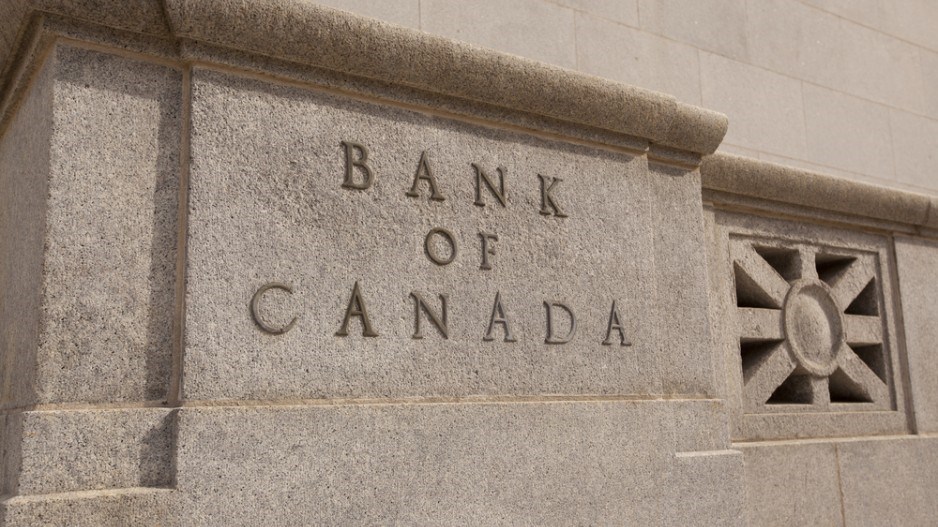The Bank of Canada’s decision Wednesday to hold the interest rate at 1.25% reflects a wait-and-see approach in the face of conflicting messages from recent statistics showing the country’s economic performance and uncertainty in the global market.
That was the message of Bank of Canada deputy governor Timothy Lane at a Greater Vancouver Board of Trade event on Thursday (March 8), where Lane told a crowd of Lower Mainland business officials that - despite favourable conditions in places like B.C. - there are signs of uncertainty, most notably in free-trade agreements like NAFTA and in the housing markets of Vancouver and Toronto.
“All things considered, we decided yesterday that the current policy rate remains appropriate,” Lane said at the meeting, adding that the Bank of Canada will have a clearer picture of the country’s economic growth potential in its April Monetary Policy Report. “While the economic outlook is expected to warrant higher interest rates over time, some continued monetary policy accommodation will likely be needed to keep the economy operating at close to potential and inflation on target.”
The Bank of Canada, in revealing the decision to keep interest rates at 1.25% Wednesday, highlighted trade policy developments as a “growing source of uncertainty” for the Canadian economic outlook. On Thursday, Lane reiterated that note of caution, especially given the ongoing NAFTA negotiations as a major point of consideration when looking at potential pressure points for Canada’s economy this year.
“With regards to NAFTA, I think there are a number of concerns out there, and certainly there’s a wide range of possible outcomes,” he said. “But what specific outcome there is would make a lot of difference to both what the magnitude and the timing of the impact will be. So it’s something we are watching very closely.”
He added that even if no changes come out of NAFTA and other Canadian trade agreements, the uncertainty surrounding the discussion is already having an impact on business investment decisions that may hinder Canada’s economic growth. Lane said ongoing U.S. tax reforms could make investment in Canada less attractive, resulting in the bank projecting a likely “dampening” effect on domestic business investments in current interest rate decisions. Again, that decision will again be reassessed in April, Lane added.
The deputy governor also said the ongoing changes in housing market regulation in B.C. may have a stronger impact than in years past, since the higher levels of average household debt would now make the impact of a higher interest rate more palpable for those who are heavily indebted. Again, Lane cautioned that the effects of these changes will be hard to predict, despite the fact that household credit growth has been decelerating in the last few months.
‘
Even Canada’s weaker-than-expected GDP growth in 2017’s fourth quarter - at 1.7%, well below the originally projected 2.5% - was mitigated by the fact that the numbers were skewed by higher imports, which reflects strong investment and increases the country’s economic capacity, Lane said.
“It’s important to look at the composition of growth,” he said. “If you look at the final domestic demand, which is a measure of how much households, businesses and governments are spending, it’s been growing steadily at about 4% or so throughout 2017… The strength of business investment itself is a good sign that businesses are actually investing in the future of the Canadian economy, so that on the whole is a more positive picture than what the headline growth number would suggest.”




